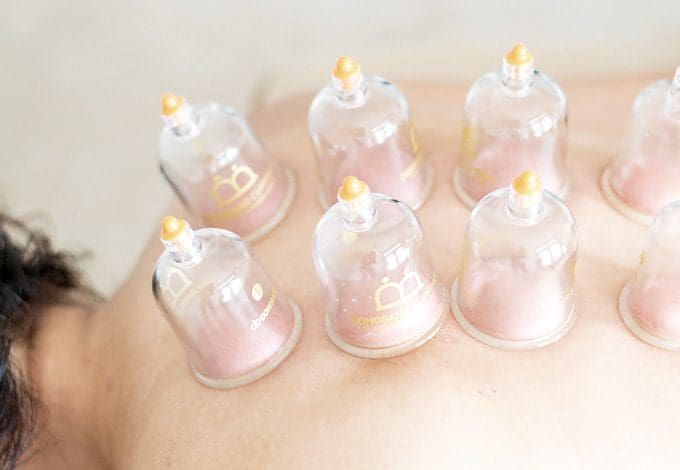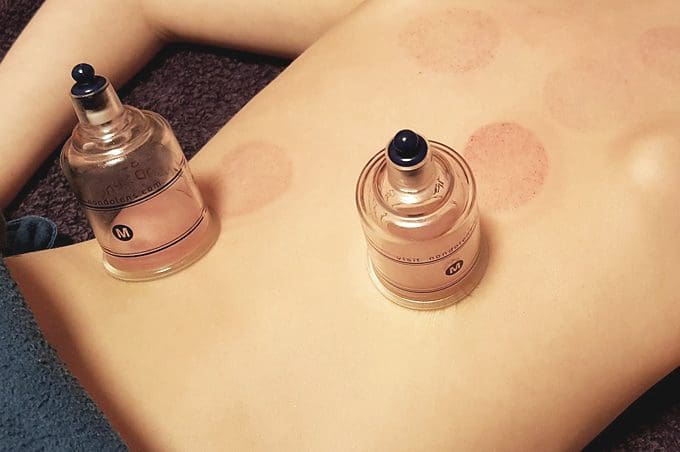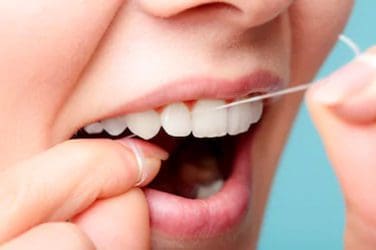words Alexa Wang
Cupping therapy is a practice that has existed for millennia but risen in popularity in recent years due to the number of celebrities endorsing the treatment.
Famous faces like The Rock and even Olympic gold medalists including Michael Phelps have been seen covered with large, red circles, and while people are certainly curious, many don’t know what cupping therapy actually entails. Here we explain what it is, its benefits, and whether it’s as painful as it looks.

What is cupping therapy?
Cupping therapy is an ancient form of alternative medicine whereby cups, usually made of glass, are placed onto the skin to create suction. This is usually performed on a person’s back where there is a large surface area of skin.
During cupping therapy, the therapist puts a flammable substance in a cup — usually alcohol or paper — which is then set alight before it goes anywhere near the skin. When the flame dies out, the cup is then placed upside down on the client’s back and the air inside cools to create a vacuum. This causes the skin to rise up in a dome-shape. The cup is generally left for up to 3 minutes, during which time the skin will significantly redden due to the blood vessels expanding. There is also a modern version of cupping therapy that uses a rubber pump rather than fire to create the vacuum. This is preferred by those who aren’t keen on open flames.
Multiple cups are used in this process — typically there will be five or seven at most After the session, an antibiotic ointment is used to prevent infection. This treatment leaves large red spots on the skin that usually disappear within 10 days, so you might not want to try cupping therapy before a beach holiday!

What are the benefits of cupping therapy?
From a biological perspective, cupping therapy invigorates circulation and stimulates blood flow in the areas being treated, while loosening connective tissues. It also draws impurities to the surface, allowing toxins to be removed. What’s more, some research shows that cupping may affect the secretion of cytokines, some of which increase inflammation while others promote healing and relaxation. Put simply, cupping therapy increases the good kind, and decreases the bad kind.
Other possible benefits of cupping therapy include pain relief and muscle relaxation. According to Traditional Chinese Medicine (which has roots in Ancient Chinese practices rather than modern science), cupping also improves the flow of ‘qi’ — vital energy bringing balance to the body.
What scientific evidence is there?
While research on cupping therapy is minimal, a study by J Tradit Complement Med concluded that the practice is: “particularly helpful in the treatment of aches and pains associated with various diseases. Thus, cupping carries the potential to enhance the quality of life”. However, the study added that further research is warranted to substantiate the diverse effects of the treatment.
That said, not everyone buys the benefits of this ancient treatment, as demonstrated by a Forbes article entitled, ‘The Ridiculous And Possibly Harmful Practice Of Cupping’. The piece notes that even the US’s NCCIH — the National Institutes of Health’s branch dedicated to complementary and integrative medicine — doesn’t endorse the practice. In fact, their summary states: “There’s been some research on cupping, but most of it is of low quality. Cupping may help reduce pain, but the evidence for this isn’t very strong. There’s not enough high-quality research to allow conclusions to be reached about whether cupping is helpful for other conditions.”
Is cupping therapy painful?
In short, generally yes. Cupping therapy may also produce other side effects such as swelling, burns, dizziness and nausea. As a precaution, pregnant women are advised to refrain from having this treatment since it can alter blood pressure or create discomfort. Salon Gold, a specialist broker that provides insurance for cupping therapists, states that: “If performed properly, cupping is a very safe treatment and has gained popularity. However there is a small risk that blood clotting can occur, as well as general accidents”. The treatment should not be carried out on broken or irritated skin, or over arteries, veins, lymph nodes, and fractures.
As with most treatments, cupping therapy isn’t entirely risk-free, which is why it should only be carried out by experienced therapists. Trying it on your friends is a definite no-go, as it increases the likelihood of it being performed incorrectly and can cause further problems.



















